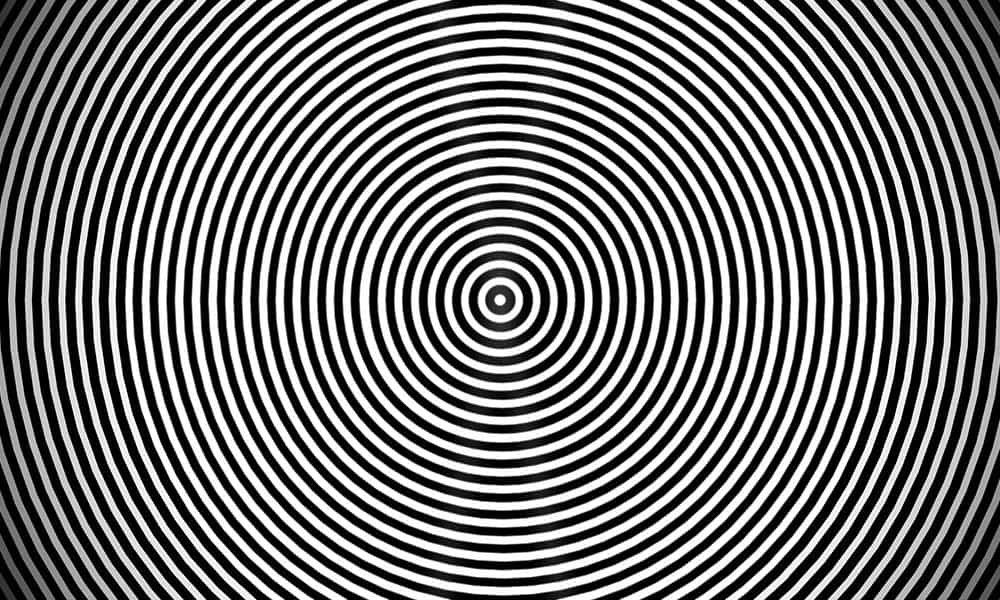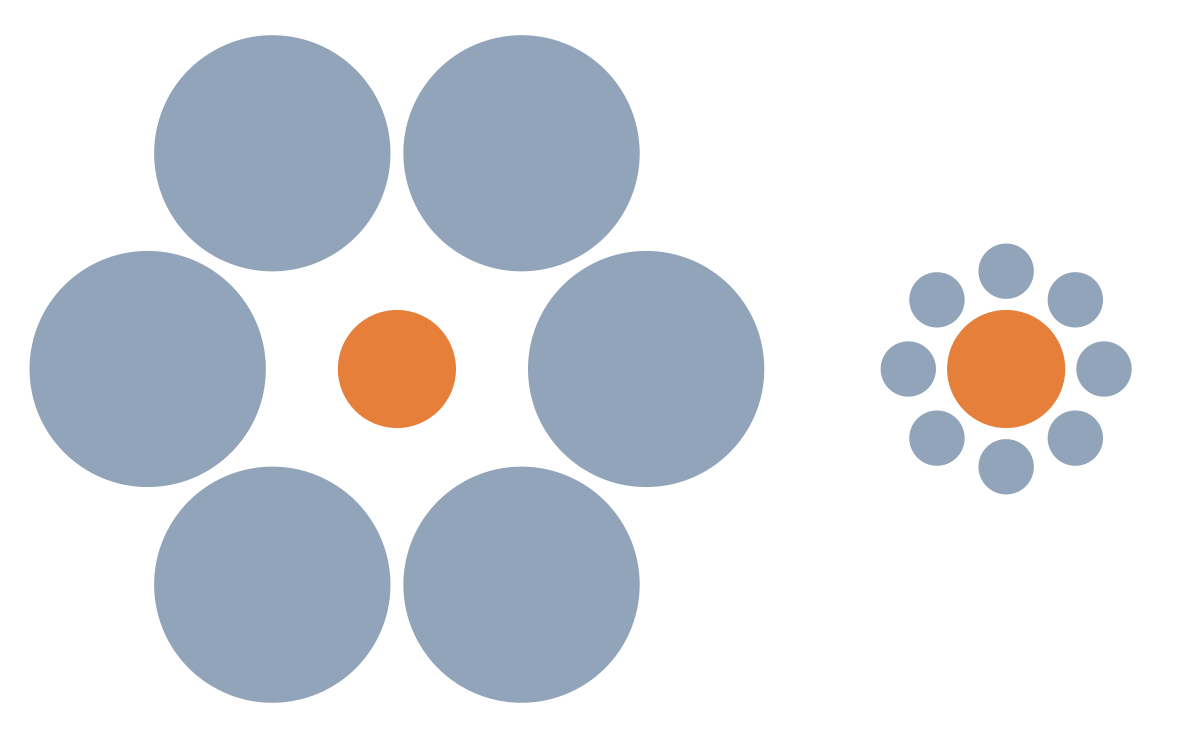Mind-boggling Optical Illusions - The World Of Visual Trickery
Optical illusions are fascinating to many people, as they can play tricks on the mind and make us question what we see. From simple illusions like the classic "duck or rabbit" drawing to complex visual puzzles, there is no shortage of mind-boggling optical illusions that can leave us scratching our heads. In this article, we'll explore some of the mind-boggling optical illusions and how they work.
Author:Dr. Felix ChaosphereReviewer:Xander OddityApr 13, 202310 Shares287 Views

Optical illusions are fascinating to many people, as they can play tricks on the mind and make us question what we see. From simple illusions like the classic "duck or rabbit" drawing to complex visual puzzles, there is no shortage of mind-boggling optical illusions that can leave us scratching our heads. In this article, we'll explore some of the mind-boggling optical illusionsand how they work.
The Science Behind Optical Illusions And How They Work
Optical illusions are a fascinating subject that has intrigued scientists, artists, and ordinary people alike for centuries. The term "optical illusion" refers to any visual phenomenon that causes a misinterpretation of what is actually being seen.
These illusions can take many forms, from simple geometrical shapes to complex images that seem to move or change before our eyes.
So how do optical illusions work, and what is the science behind them? At the heart of every optical illusion is the way that our eyes and brains perceive and process visual information.
When we look at an object, light from that object enters our eyes and stimulates cells in our retina that send signals to our brain. Our brain then interprets these signals and creates a mental image of the object in our minds.
However, this process is not always straightforward. Our brains use a number of shortcuts and assumptions to help us quickly and efficiently interpret the visual world around us.
For example, our brains tend to assume that objects are three-dimensional and have a fixed size and shape, even if they are seen from different angles or in different lighting conditions.
This can lead to errors in perception when the assumptions made by our brains do not match up with the actual visual information received by our eyes.
One example of an optical illusion that demonstrates this phenomenon is the Müller-Lyer illusion. This illusion consists of two lines of equal length, each with a series of arrows at the ends that point either inward or outward.
Even though the two lines are the same length, most people perceive the line with the outward-pointing arrows as being longer than the line with the inward-pointing arrows.
Scientists believe that this illusion occurs because our brains interpret the lines as three-dimensional objects that are either receding into the distance or protruding toward us.
The line with the outward-pointing arrows appears to be protruding towards us, which makes our brain interpret it as being longer than the line with the inward-pointing arrows, which appears to be receding into the distance.
The Most Fascinating Optical Illusions That Will Blow Your Mind
These are just a few examples of the many mind-boggling optical illusions that exist. Whether you're a fan of simple illusions or more complex puzzles, optical illusions are a great way to challenge your mind and explore the limits of perception.
The Ames Room Illusion
The Ames Room illusion is a classic optical illusion that uses perspective to create a distorted sense of space. The room is built so that one side is shorter than the other, and the walls and ceiling are angled in such a way that a person standing in one corner appears to be much larger or smaller than a person standing in the opposite corner. This illusion is often used in movies to make actors appear much larger or smaller than they actually are.
The Checker Shadow Illusion
The Checker Shadow illusion is a simple but powerful illusion that demonstrates how our brains interpret visual information. In the illusion, two squares of different shades of grey are placed on a checkerboard pattern. Although the square on the right appears to be a darker shade of grey, both squares are actually the same colour. This illusion works because our brains interpret the square on the right as being in a shadow, which makes it appear darker.
The Spinning Dancer Illusion
The Spinning Dancer illusion is a popular illusion that can be seen in many places online. In the illusion, a silhouette of a dancer appears to be spinning either clockwise or counterclockwise, depending on how you interpret it. However, the image is actually static and does not move. This illusion works because our brains use visual cues to interpret the motion of the dancer, but these cues can be interpreted in different ways.
The Hermann Grid Illusion
The Hermann Grid illusion is a simple but effective illusion that involves a grid of black squares on a white background. In the illusion, gray dots appear at the intersections of the grid, but when you look directly at them, they disappear. This illusion works because our brains use contrast to process visual information, and the intersections of the grid create a contrast that tricks our brains into seeing the dots.
The Floating Cube Illusion
The Floating Cube illusion is a fascinating illusion that involves a cube that appears to be floating in the air. In reality, the cube is made up of several two-dimensional shapes that are arranged in a way that creates the illusion of a three-dimensional cube. This illusion works because our brains use perspective to interpret visual information, and the arrangement of the shapes creates the illusion of depth.
The Necker Cube Illusion
The Necker Cube illusion is a classic optical illusion that involves a two-dimensional drawing of a cube that can be perceived in two different orientations. When you look at the cube, your brain can interpret it as either rotating clockwise or counterclockwise. This illusion works because your brain uses visual cues such as shading and depth to interpret the orientation of the cube, but these cues can be interpreted in different ways.
The Ponzo Illusion
The Ponzo illusion is a fascinating illusion that involves a drawing of two horizontal lines that are the same length but appear to be different lengths due to the way they are positioned in a converging perspective. This illusion works because your brain uses depth cues such as converging lines to interpret the size of objects in relation to their environment.
The Ebbinghaus Illusion
The Ebbinghaus illusion is a complex illusion that involves a central circle surrounded by several other circles of different sizes. Depending on the size of the surrounding circles, the central circle can appear to be larger or smaller than it actually is. This illusion works because your brain uses visual cues such as relative size and context to interpret the size of objects.
The Müller-Lyer Illusion
The Müller-Lyer illusion is a classic illusion that involves two lines of equal length with arrows at the ends pointing in opposite directions. One line appears longer than the other due to the angle and length of the arrows. This illusion works because your brain uses visual cues such as line length and angle to interpret the relative size of objects.
The Rotating Snakes Illusion
The Rotating Snakes illusion is a popular illusion that involves a series of overlapping snakes that appear to rotate endlessly in a spiral pattern. This illusion works because your brain uses visual cues such as contrast and motion to interpret the direction and speed of the rotation.
People Also Ask
What Causes Optical Illusions?
Optical illusions are caused by the way our brain processes visual information, sometimes resulting in misinterpretation of what we see.
How Do Optical Illusions Affect The Brain?
Optical illusions can affect the brain in various ways, such as challenging our perception, highlighting the limitations of our senses, and revealing how our brains interpret visual information.
Are Optical Illusions A Form Of Trickery?
While optical illusions can be used to create visual trickery, they are also important tools for scientific research and can be used to explore the mysteries of human perception.
Can Optical Illusions Be Harmful To The Eyes?
No, optical illusions are not harmful to the eyes. They are simply visual puzzles that challenge the brain's interpretation of visual information.
How Do Optical Illusions Relate To Art?
Optical illusions have long been a popular tool in art, often used to create visual illusions or to explore the relationship between the artist, the viewer, and the artwork itself.
Conclusion
Optical illusions continue to fascinate and challenge us, as they reveal the limitations of our perception and the powerful role that our brains play in interpreting visual information. Whether you're studying optical illusions for scientific research or simply enjoying them as a fun visual puzzle, these mind-boggling illusions are sure to leave you amazed and intrigued.

Dr. Felix Chaosphere
Author
Dr. Felix Chaosphere, a renowned and eccentric psychiatrist, is a master of unraveling the complexities of the human mind. With his wild and untamed hair, he embodies the essence of a brilliant but unconventional thinker. As a sexologist, he fearlessly delves into the depths of human desire and intimacy, unearthing hidden truths and challenging societal norms.
Beyond his professional expertise, Dr. Chaosphere is also a celebrated author, renowned for his provocative and thought-provoking literary works. His written words mirror the enigmatic nature of his persona, inviting readers to explore the labyrinthine corridors of the human psyche.
With his indomitable spirit and insatiable curiosity, Dr. Chaosphere continues to push boundaries, challenging society's preconceived notions and inspiring others to embrace their own inner tumult.

Xander Oddity
Reviewer
Xander Oddity, an eccentric and intrepid news reporter, is a master of unearthing the strange and bizarre. With an insatiable curiosity for the unconventional, Xander ventures into the depths of the unknown, fearlessly pursuing stories that defy conventional explanation. Armed with a vast reservoir of knowledge and experience in the realm of conspiracies, Xander is a seasoned investigator of the extraordinary.
Throughout his illustrious career, Xander has built a reputation for delving into the shadows of secrecy and unraveling the enigmatic. With an unyielding determination and an unwavering belief in the power of the bizarre, Xander strives to shed light on the unexplained and challenge the boundaries of conventional wisdom. In his pursuit of the truth, Xander continues to inspire others to question the world around them and embrace the unexpected.
Latest Articles
Popular Articles

